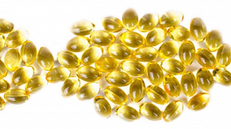Salt consumption down - but not enoughv
- Christopher Chanin
- Mar 24, 2016
- 2 min read
Adults in England have cut their average salt consumption by nearly a gram in the last decade, but at 8g per day it is still above the recommended 6g for good health, figures reveal.
The data from Public Health England is based on measurements taken from a random sample of 689 adults.
Three quarters of the salt we eat is in foods we buy, and there has been a push for industry to cut salt levels.
High salt can raise blood pressure, which increases the risk of strokes.
Voluntary salt reduction targets were first set in 2006 for a range of food categories in the UK that contribute most to the population's salt intakes - for example crisps, butter and margarines, breakfast cereals and bread.
In 2014, fresh targets were set to include popular dishes consumed outside the home, such as sandwiches, ready meals and children's meals in fast food outlets.
Dr Alison Tedstone, chief nutritionist at PHE, said: "While people are having less salt than 10 years ago, we are still eating a third more than we should.
"The majority of the salt we eat is in everyday foods so it's important to check labels and choose lower salt options. Many manufacturers and retailers have significantly reduced the salt levels in everyday foods. However, more needs to be done, especially by restaurants, cafes and takeaways."
Campaigning group Consensus on Action on Salt and Health (CASH) said the nation's salt intake had remained around the 8g per day level for the last few years. It wants more regulation around salt in food.
When shopping for food, you can take steps to cut your salt intake:
· Compare nutrition labels on food packaging when buying everyday items. You can really cut your salt intake by checking the label and choosing the pizza, ketchup or breakfast cereal that's lower in salt. Try choosing one food a week to check and swap when you're food shopping.
· Go for reduced-salt, unsmoked back bacon. Cured meats and fish can be high in salt, so try to eat these less often.
· Buy tinned vegetables without added salt. Do the same with tinned pulses.
· Watch out for the salt content in ready-made pasta sauces. Tomato-based sauces are often lower in salt than cheesy sauces or those containing olives, bacon or ham.
· For healthier snacks, choose fruit or vegetables such as carrots or celery sticks. If you are going to have crisps or crackers, check the label and choose the ones which are lower in salt.
· Go easy on soy sauce, mustard, pickles, mayonnaise and other table sauces, as these can all be high in salt.
Source: NHS Choices












































Comments